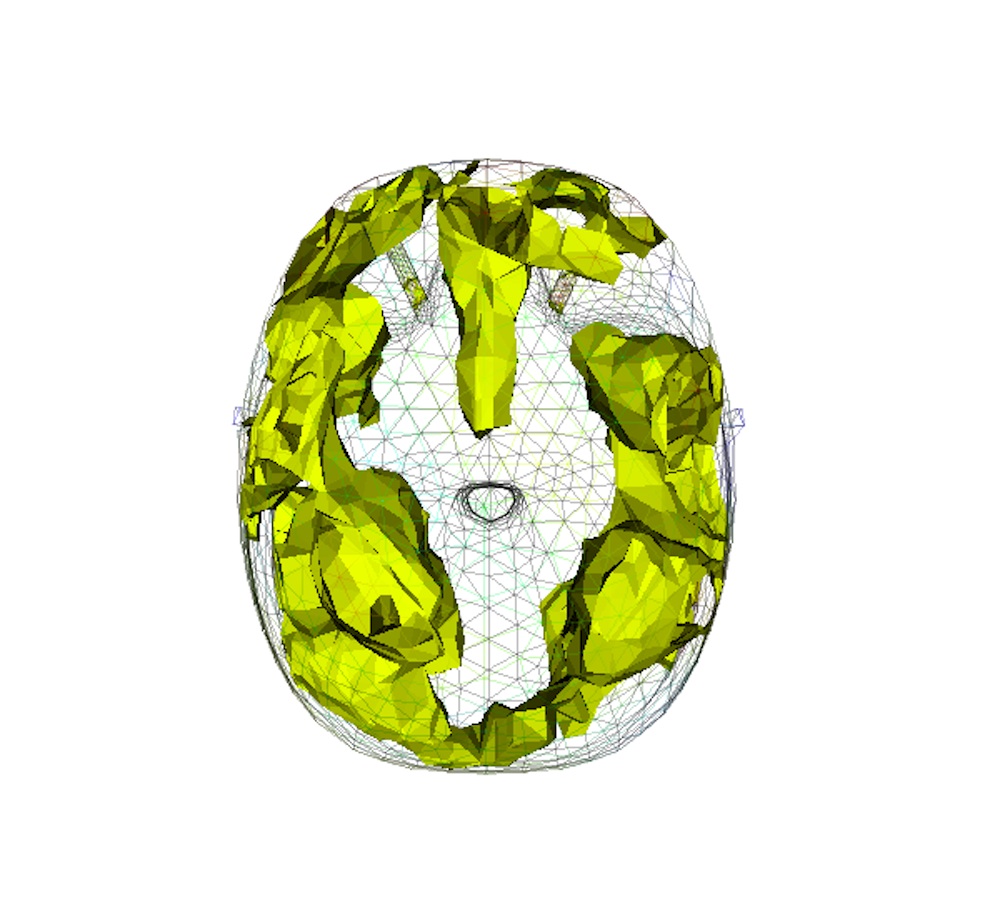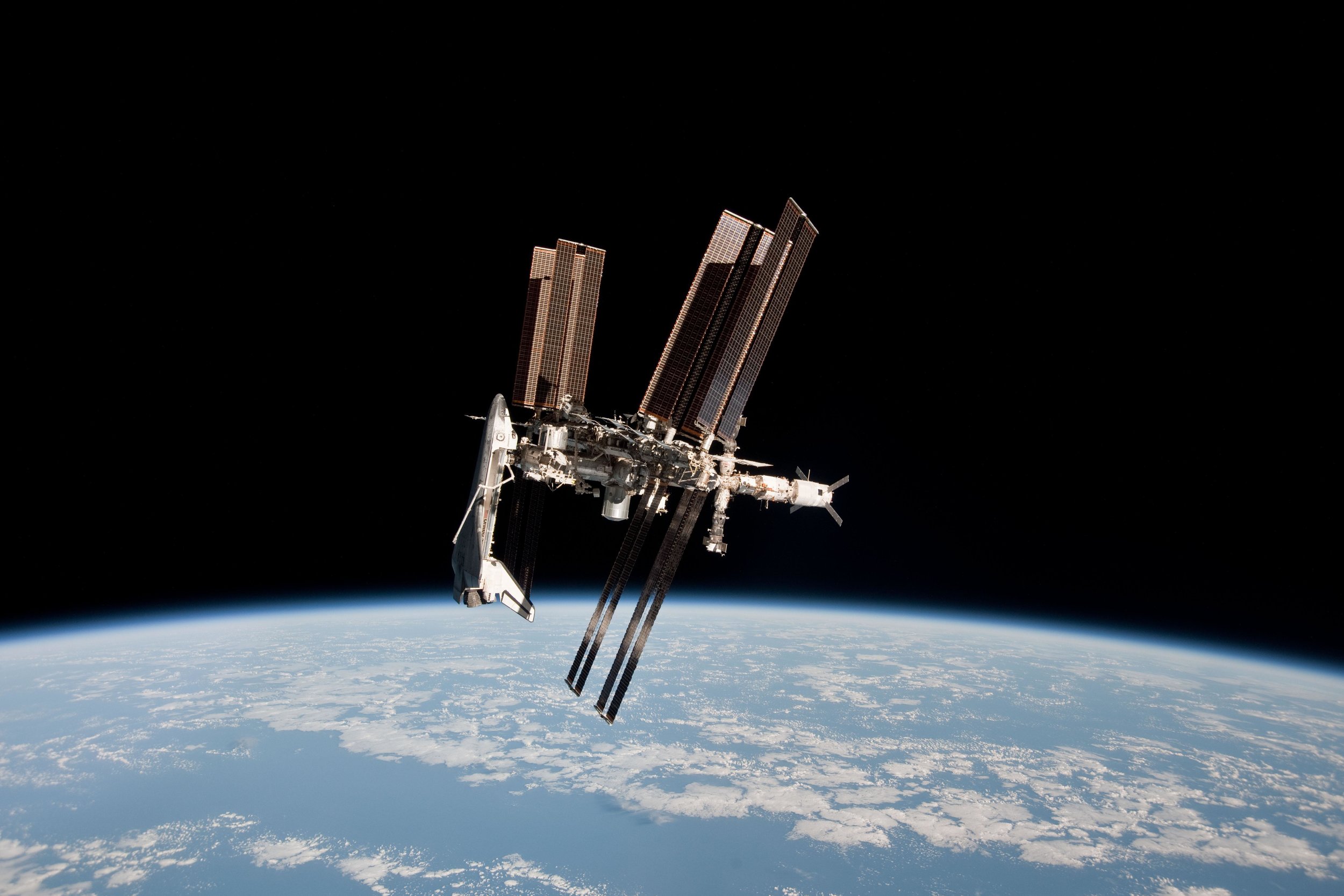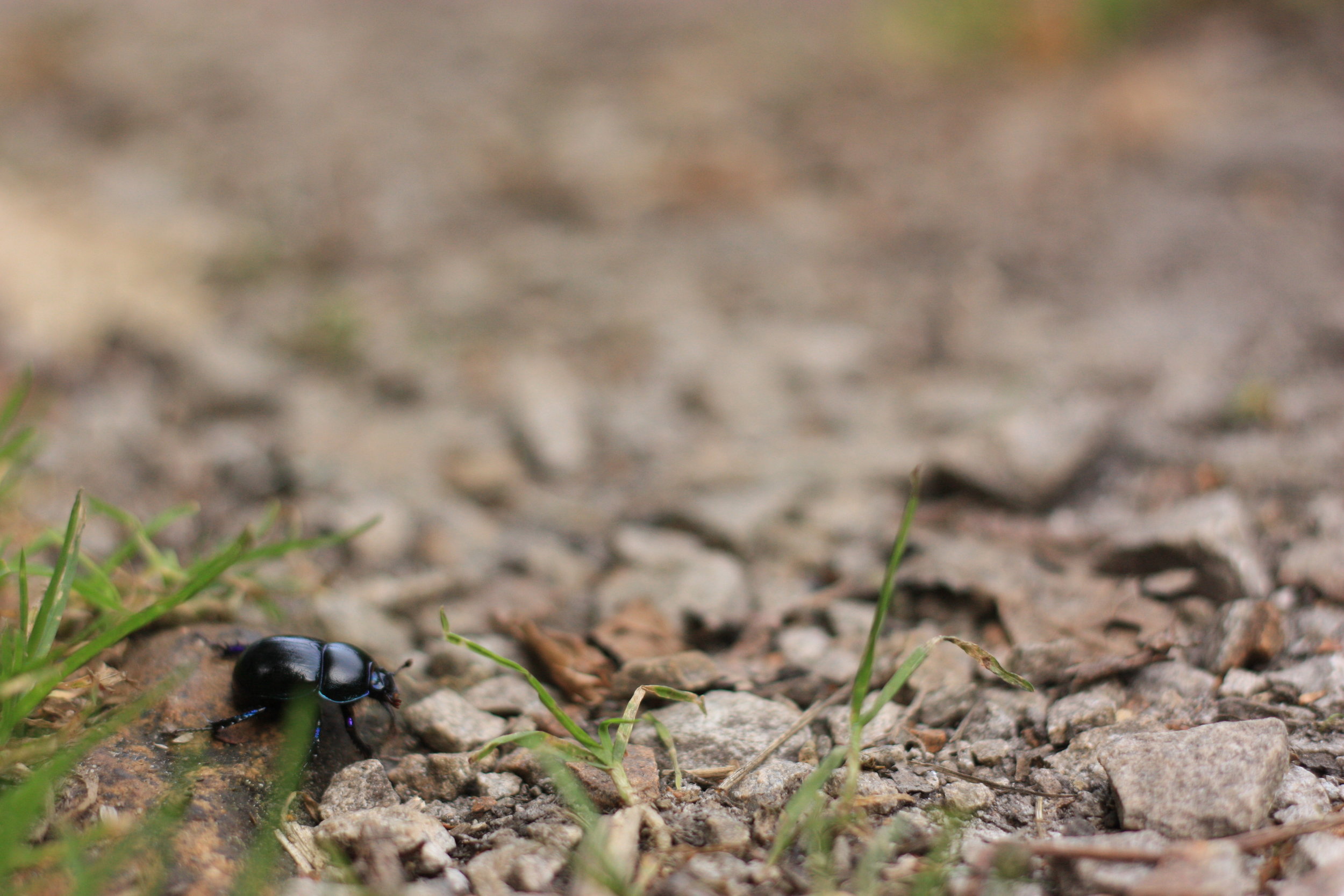Seaside symmetry
Read MoreVIDEO: Thursday - Dispatches from Margate
Interior textures.
Read MoreVideo: Exploding Baubles at 34,000 fps!
Capturing exploding baubles with a high-speed camera
Read More(Re)constructing Reality
Okay, so here are a couple of interesting videos relating to the field of photography (or digital image processing to be more precise) that I've come across over the last couple of months. Some of these have been around for a while, but I thought as a collection they were sufficiently interesting to post up on here. What I find interesting about them is the way in which they deconstruct or alter the way in which we relate to reality; slowing down time to observe imperceivable movements or reinterpreting images to reveal seemingly hidden information.
A trillion frames per second
The first is a video from researchers at MIT who've developed a trillion frame per second (fps) camera. That's correct - a trillion. So you're probably used to watching video in the region of 30 fps and that's fast enough to trick your mind into perceiving motion between frames.
However, this camera is capable of capturing light, as it travels from point A to point B. Although it doesn't seem to be able to capture the movement of individual photons, it does seem able to capture individual pulses of light, as they move across the frame or scatter as they interact with certain materials.
Interestingly, it's dubbed by it's creators as the world's 'slowest fastest camera' - despite being able to capture the speed of light, it can only record data in two dimensions and only one of these is spatial (the other is time).
So in order to record enough data to obtain a multidimensional movie, it must record the scene multiple times from slightly different angles and this takes time (up to an hour apparently). Anyway, the video below elaborates on this and features some of the incredible footage captured by the camera.
http://youtu.be/EtsXgODHMWk?hd=1
As the camera requires multiple takes to obtain enough data, it's seems that its applications are somewhat limited. However it's ability to capture light as it scatters across a scene is certainly valuable in the analysis of different materials and could even be used for what its designers describe as 'ultrasound with light'. Read more here and here.
The camera never lies?
The first time I saw this I was pretty stunned. This video basically outlines a new and simple method of realistically inserting objects into an image after it was taken (in post-production essentially). This is done without the user having to perform complex measurements with perspective or lighting - instead, with minimal annotation the user can place objects into an image and the system will work out all the necessary lighting conditions to which it should to conform to. The result, as you will see, is incredible - with the inserted objects appearing as if they existed in the original scene.
What's more, the researchers also found that subjects were unable to tell the difference between real images and images generated by their system. It's looks so good it's almost a little disturbing.
You sort of have to see it to believe it:
[vimeo http://www.vimeo.com/28962540 w=501&h=376]
You can read more about it here, or their research paper here.
Reconstructing reality?
The last two videos are also pretty smart, describing processes by which poor quality images can be reinterpreted or reconstructed using the information within them.
If you can get past the rather dry voice over, the first involves the reinterpretation of data within an image allowing one to:
"Decide later if it stays a photo, becomes a video or turns into a lightfield so you can digitally refocus"
http://youtu.be/mAS2IxieUj4
The final is one you are likely to have come across and details an extraordinary feature in the upcoming release of Adobe's photoshop series (CS6) - It's an image deblurring feature which seems to work remarkably well, able to pluck lost detail from what seems like nowhere:
http://www.youtube.com/watch?v=Q10kwKm77RY&feature=related
I definetely ran out of steam towards the end of this post.
Thanks.
Three Dimensional Consciousness
Looking into the unconscious mind
Using a new imaging method scientists from the University of Manchester have constructed a three-dimensional sequence of the brain as it loses consciousness. The small study used a new technique called 'functional electrical impedance tomography of evoked response' (fEITER), which is basically a new way of measuring changes in the brain's electrical conductivity. This is useful because changes in electrical conductivity are believed to reflect changes in the brain's electrical activity and by knowing where abouts in the brain this activity is occurring, we can better understand how the brain operates under different conditions; in this case unconsciousness. What's great about this new method is that it has an extremely fast response, performing it's imaging process 100 times a second, allowing the team to monitor the brain's activity in real time!

The team used fEITER to scan the brains of 20 healthy volunteers as they were administered an anaesthetic and imaged changes in the brain's electrical conductivity as it moved from a conscious to an unconscious state. The team found that a loss in consciousness corresponded with changes in electrical activity deep within the brain. The findings support a theory proposed by Professor Susan Greenfield which suggests that consciousness is formed from the unhindered communication between groups of brain cells called 'neural assemblies'. The findings appear to show that when someone is anaesthetised, these small neural assemblies either work less well together or inhibit communication with other neural assemblies.

The use of fEITER is a great advance and a first for neuroimaging, allowing scientists to witness the brain's transition into unconsciousness in real-time. However there is still a lot of work to be done to understand exactly how and why the brain behaves differently in an unconscious state. The fEITER device used will also have a significant impact in many areas of medical imaging, but will be particularly useful in helping us understand anaesthesia, sedation and unconsciousness. Perhaps the most useful application of this device will be in diagnosing neuronal changes which occur in head injury, stroke and dementia patients.
You can watch a video of the fEITER scan here.
Painting with Video
Content is Queen
Below are two very novel and dynamic video portraits generated by artist Sergio Albiac. He has come to call the technique used to create these pieces 'generative video painting'.
http://vimeo.com/24065726
You can see in the movie above, that the portrait is constructed from a 'collage' of different video clips, similar (but wonderfully more complex) to the effect seen in a photo mosaic image.
Albiac describes that his technique...
“...uses regions of video content to effectively represent or “paint” heterogeneous regions of the image. Both the partial content of the videos and the whole image are fully visible at the same time, widening the possibilities to deliver meaning in a contemporary aesthetic language.”
The effect creates a duality in the work; presenting an un-synced mish-mash of partially visible video content which is used together to construct a more complete, unified form, in this case portraits of two very famous women.
http://vimeo.com/23974393
Portrait of a legacy
I mentioned in a previous post that no space shuttle has ever been fully photographed whilst docked with the International Space Station. However NASA has released today landmark portraits of Endeavour and the ISS taken by Italian astronaut Paolo Nespoli on the 23rd of May whilst returning to Earth in a Russian Soyuz spacecraft.

This image was made possible by rotating the returning space craft 130 degrees so that Nespoli could take photos and video footage at a distance of about 600m from the ISS. It's amazing to see the relative size of the space shuttle in comparison to the space station and I must admit, I didn't realise how big it was! This photo I'm sure will come to represent the lasting legacy of NASAs space shuttle programme and will no doubt be one the most remembered space images of recent times.
You can view more of the images here and additional video footage will be released once it has been processed by NASA.
I'd also recommend having a look at some of Nespoli's other photos on his flickr account, which hosts a beautiful and diverse collection of shots.
Endeavour: An Ending (Ascent)
 Earlier today, the US Space Shuttle Endeavour launched successfully on its final mission - it is now currently en route to the International Space Station where it will be delivering the $2bn Alpha Magnetic Spectrometer. It will also be carrying a bunch of baby squid.
Earlier today, the US Space Shuttle Endeavour launched successfully on its final mission - it is now currently en route to the International Space Station where it will be delivering the $2bn Alpha Magnetic Spectrometer. It will also be carrying a bunch of baby squid.
After 30 years of the US Space Shuttle programme, the Americans will have to rely on the Russians to ferry their astronauts to and from the ISS. Atlantis will be the final shuttle to launch in the programme - expected sometime in July.
Interestingly NASA has never been able to obtain an 'all inclusive' photograph of the ISS docked with one of its shuttles. NASA had hoped that the Russians would perform a flyabout of the station in one of their Soyuz modules in order to obtain historical images of the station docked with Endeavour. However these plans were later rejected amidst safety concerns regarding the re-docking of the module to the station. Unfortunately for NASA, there will only be one more chance to document the shuttle's legacy; after the next and final mission the US shuttles will be placed into retirement permanently - never to feel the cold emptiness of space again.
Here's a webcast produced by NASA which sums up Endeavour's legacy perfectly (if a little cheasily):
http://vimeo.com/23221452
Super Collider also put on a charming retirement party for Endeavour tonight at the Bookclub in Shoreditch; speakers included photographer David Ryle and author Piers Bizony - I recorded the event and hope to be podcasting it soon - lets wish Endeavour and its crew a safe trip!
-Ed
Vue Lumière No 765 - Serpentine Dance, 1896
One interesting piece of media I came across today (whilst reading about the origins of cinema) was an early piece of footage shot by the Lumiere brothers in 1896: http://vimeo.com/20209451
The silent film depicts an unnamed dancer quite hauntingly perform Loie Fuller’s Serpentine Dance. Each frame was hand coloured to help vividly depict the striking motion conducted by the dancer.
Auguste Lumière and Louis Lumière were among the earliest filmmakers in history and produced some of the most pioneering and influential films of their time. The brothers are best known for producing their series of short ‘actuality’ films, which captured everyday events on film. These ‘actuality’ films are considered by many to represent the earliest incarnation of the documentary film.
Focal Power
A short film I found whilst browsing Vimeo this morning, I recommend watching in HD and with some boomy speakers: http://vimeo.com/18495371
Although the aerial shots would be interesting in themselves, the film has been manipulated to give the impression of 'miniaturisation' which transforms the film into a collection of enchanting scenes. The miniaturisation of these scenes provides an interesting contrast against the true scale at which power generation and consumption occurs across the planet. The poetically conceived caption for the video describes the scenes as 'examined, microscopically, zoomed in from afar. Dimensions without scale.'
If you look at the film closely you will see that there is a short depth of field with a narrow band of sharp focus running across the image. This false 'miniaturisation' effect can be obtained through a method known as tilt/shift (although it usually only involves tilt) and can be produced optically using specialist lens adaptations or through post-production trickery. In essence, it works by employing the Scheimpflug principle in which the lens plane is 'tilted' relative to the image plane (e.g. the sensor on a digital camera) and produces images similar to those taken at close range with a macro lens.
Usually the point of focus lies parallel to the subject, which means that objects which lie at the same distance from the camera all appear in sharp focus (in other words these objects lie within the 'plane of focus'). By employing the Scheimpflug principle it is possible to orientate the plane of focus so that it passes through the subject creating a much shallower depth of field, which reduces the area of the subject in focus. This can be achieved by 'tilting' the lens (for example upwards) which moves the plane of focus relative to the image and subject plane; a much smaller region of the subject now exists in focus. The diagram below illustrates how the lens plane is no longer parallel to the image plane after the lens tilt.

If you were to shoot a high-rise building face on, with the camera parallel to the building you would obtain an image in which all of the building within the frame was in focus. When employing the Scheimpflug principle and the camera lens is tilted (e.g. upwards), the camera lens and building are no longer parallel. The lower portion of the building is now closer to the lens and the higher portions are now further away, this creates a shallow depth of field and as the plane of sharp focus is tilted the lower and upper portions of the building fall out of focus.
The photo I took below demonstrates the effect of which tilt/shift photography attempts to achieve. This photo, with its shallow depth of field, is taken at close range and involves objects which are very small in size.
Tilt/shift photography is able to recreate this 'miniature' aesthetic in much larger compositions such as those involving stadiums, cities and landscapes. These types of images are most effective when taken at a high-angle and can be shot using specialist tilt lenses or created by applying a false focal gradient in post production (simply with the selective addition of blur).







